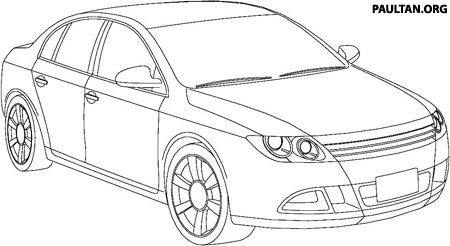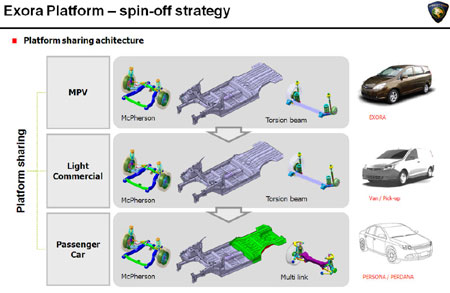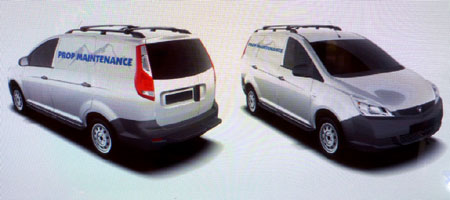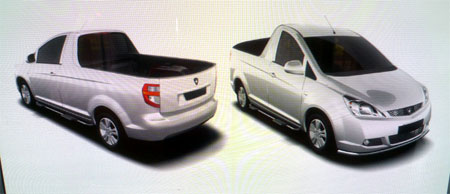
Proton has always had this problem. The high development cost of vehicle platforms. Vehicle platform and engine technology are some of the main reasons that they need a technical tie-up. Whether it is to share a platform with an existing manufacturer, or sell their own platform to recover some of the development cost, the world economy is just in too much of a crappy condition for Proton to have so many platforms.
Continue reading after the jump for a glimpse into Proton’s new platform strategy.
The new direction of the future in terms of vehicle platforms for Proton is a two platform strategy. One large platform, and one smaller one. We now have these two platforms, and all that needs to come next are the cars built on these platforms in order to plug the holes in the market that Proton has been leaving void.
The small platform is the Proton Saga platform. With small platforms that typically underpin cheaper cars, you can go for volume. That means less models based on the platform, but more cars sold, which helps bring up the numbers. Companies like Toyota can even do better, its small platforms can spawn so many models, and I’m not only talking about the “same chassis different bodykit” JDM models.
Enter the large platform, the Proton Exora’s platform. It was developed by Proton and automotive consultancy LG CNS, with the specifications and directions from Proton.
It is quite a versatile platform, allowing it to be reshaped for different kinds of cars. This allows better return on investment, more variants of essentially the same or similiar underpinings with lots of parts sharing, resulting in less units sold multiplied by many types equals to the large volume needed to reduce costs and improve profit.
The easiest and quickest vehicle would be a commercial vehicle version of the Proton Exora. There is also potential for a Proton Persona or Proton Perdana replacement model (an initial concept drawing from Proton shown above).
It has the option for both a torsion beam and multi-link rear, depending on usage. All Proton needs to do to create a CR-V type of vehicle is fit the multi-link setup at the rear and install the all-wheel drive parts. Don’t forget to raise the height too.
The next generation Persona can come with a torsion beam. A sportier version, the future equivalent of the GEN2, can use the multi-link setup. Stretch it a little and give it the multi-link as well, and you get a potential new Perdana.
Because the engine bay can take engines from as small as a 1.3 litre inline-4 all the way up to a 2.5 litre V6 or even an inline-5, and is already ready to take a turbocharged Campro engine, I am indeed looking forward to future product launches from Proton.
Proton engineers have developed a really nice product. The Proton Exora is a true bargain at its price with the only downside being its low on torque. But I think many people who just want something to lug their family members around won’t mind it and will get used to it. You need a little more calculation when entering busy roundabouts or crossing busy crossjunctions that’s all.
I really hope Proton’s suppliers and assembly plant will buck up and build the Proton Exora to the specs of that nice MPV that Proton has developed. Not a half baked unit that’s put together wrongly. A perfectly assembled Proton Exora can be the perfect people mover for Malaysian income levels.
Related Posts:
Proton Exora: Malaysia’s first MPV from RM69,998!
AD: Drive the Proton model of your dreams. Submit your details and Proton PJ will get in touch with you.
Looking to sell your car? Sell it with Carro.























AI-generated Summary ✨
Comments express skepticism about Proton's quality and safety, highlighting differences between local and export versions. Many praise the new Exora MPV for its value, features, and design, with some requesting higher engine capacities. Several comments show excitement over the sketch resembling a Perdana or other models, hinting at future Proton releases like replacement models and SUVs, with hopes for better engines and diesel options. Overall, there is support for Proton's platform versatility, but concern remains about power, safety, and quality consistency. The comments reflect a mix of anticipation, cautious optimism, and criticism, emphasizing the importance of safety, engine performance, and value for money in Proton's upcoming models.